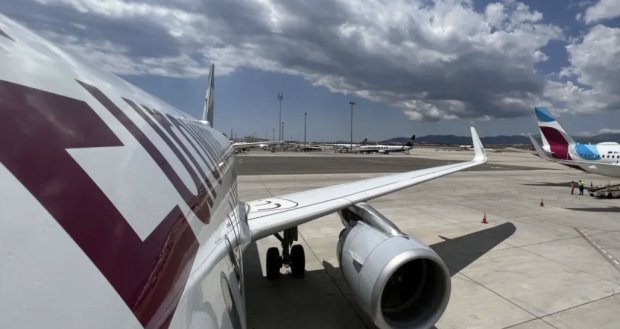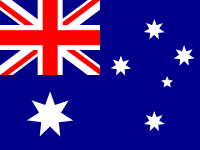Eurowings gets new premium seat before other Lufthansa Group airlines

Eurowings is introducing a new premium business seat - its 'Premium BIZ' seat - on its A320neo service between Berlin and Dubai.
The seat will be bookable from Aug-2025 and flown from Nov-2025. Eurowings also plans to introduce the concept on other longer medium haul routes in the autumn of 2025.
Notably, the Lufthansa low-cost subsidiary is trialling the new seat before any other group airline, none of which currently have any kind of premium seats on smaller narrowbodies.
Eurowings is more cost-efficient than other Lufthansa Group airlines. However, its unit cost does not qualify as 'low-cost' by comparison with other European LCCs.
The launch of a new premium-style product on Eurowings suggests that Lufthansa is keeping its options open on the use of its 'value airline' beyond the value segment.
Summary
- Eurowings’ Premium BIZ seat, in a 2x2 configuration, is its fourth “comfort zone”. It is Germany’s first airline with premium seats on smaller narrowbodies.
- Eurowings has 40 Boeing 737 MAX8s on order – “the most extensive fleet renewal in its history”; its orders are a higher percentage of its fleet than Vueling’s and Transavia’s.
- Eurowings’ 121 aircraft have an average age of 13.5 years – older than Vueling’s and Transavia’s.
- Its load factor leads Lufthansa Group, but lags other European LCCs, and its unit cost does not qualify as ‘low-cost’.
- Germany is a high cost environment. Eurowings is a more cost efficient growth platform than Lufthansa, but its post-pandemic recovery has lagged the group’s.
Eurowings' Premium BIZ seat is its fourth 'comfort zone'
Manufactured by the Italian supplier Geven, Eurowings' Premium Biz seat features adjustable backrests, plusher upholstery, and an ergonomic design. It will be installed in two rows of the A320neo in a 2-2 configuration, replacing the standard 3-3 economy seats.
Eurowings boasts that it will now be offering several "comfort zones" on selected routes: the Premium BIZ seat (eight seats per aircraft), BIZclass (free middle seat and more legroom), the SMART (optional additional legroom) economy fare, and the BASIC economy fare.
Eurowings is Germany's first airline with premium seats on smaller narrowbodies
Eurowings will be the first airline in Germany to offer premium seats (i.e. anything other than standard economy seats) in smaller narrowbody aircraft, such as the A320neo.
Lufthansa, its parent, which positions itself as a premium brand, does not currently offer premium seats on its A320 fleet (although it has economy plus seats on its A321neos, also manufactured by Geven).
Eurowings will introduce premium business seats on medium-haul routes

Source: Eurowings.
The Eurowings press release announcing its new seat said that its trials from the 2025/26 winter timetable onwards "will also provide other airlines in the Lufthansa Group with important insights for the future configuration of new aircraft fleets".
Eurowings has 40 Boeing 737 MAX8s on order -"the most extensive fleet renewal in its history"
Eurowings' investment in the premium product comes as it approaches "the most extensive fleet renewal in its history".
It has 40 Boeing 737 MAX8s on order, with deliveries due from 2027 to 2030. This will follow the delivery of eight more A320-200neos between 2025 and 2027.
Its orders are a higher percentage of its fleet than Vueling's and Transavia's
This total of 48 outstanding aircraft orders represents 40% of its current fleet of 121 aircraft.
Eurowings' orders are a higher percentage of its current fleet than are the orders of the low-cost subsidiaries of the other two leading European legacy airline groups.
IAG's Vueling has orders representing 29% of its fleet, whereas for Air France-KLM's Transavia the figure is just 4%.
See related report: European narrowbody aircraft fleet: the unstoppable rise of independent LCCs.
Eurowings' 121 aircraft have an average age of 13.5 years, older than Vueling's and Transavia's
Eurowings' current fleet of 121 aircraft at 3-Jun-2025 comprises 33 Airbus A319-100s, 63 Airbus A320-200s, eight Airbus A320-200neos, six Airbus A321-200s, five Airbus A321-200neos and six Boeing 737-800s.
Note that this includes 28 aircraft operated by Eurowings Europe Limited.
Eurowings*: fleet at 3-Jun-2025
|
Aircraft type |
In service |
Inactive |
Current fleet |
On order |
|---|---|---|---|---|
|
Airbus A319-100 |
31 |
2 |
33 |
0 |
|
63 |
0 |
63 |
0 |
|
|
8 |
0 |
8 |
8 |
|
|
Airbus A321-200 |
6 |
0 |
6 |
0 |
|
Airbus A321-200N |
5 |
0 |
5 |
0 |
|
0 |
0 |
0 |
40 |
|
|
6 |
0 |
6 |
0 |
|
|
Total |
119 |
2 |
121 |
48 |
*Includes 28 aircraft operated by Eurowings Europe Limited.
Source: CAPA - Centre for Aviation Fleet Database.
The average age of the fleet is 13.5 years, which is a little below the average of 14.7 years for the Lufthansa Group, but very close to the Europe-wide average of 13.7 years.
However, this is older than Vueling's average fleet age of 12.1 years, and Transavia's 10.7 years.
The three airlines' different levels of orders as a percentage of their current fleet reflect their being at different stages in their capital expenditure, growth and replacement cycles.
Nevertheless, Eurowings' significant order book is a signal that Lufthansa places strategic importance on its low-cost subsidiary for the future development of the group.
Its load factor leads Lufthansa Group, but lags other European LCCs…
In 2024 Eurowings achieved a passenger load factor of 84.8%.
This was above the group-wide load factor of 83.1%, and the highest of any airline in the group (SWISS was next-best, with 84.0%, while Lufthansa was third, with 82.8%).
However, Eurowings' load factor is low compared with other European low-cost airlines.
Transavia's 2024 load factor was 88.7%, and Vueling's was 92.2%. Among the leading independent LCCs, easyJet's load factor was 89.3% (year to Sep-2024), Wizz Air's was 91.2%, and Ryanair's was 94% (both for the year to Mar-2025).
…and its unit cost does not qualify as 'low-cost'
Load factor is not the only metric on which Eurowings does not really resemble a low-cost airline.
It also fails to meet the most crucial requirement of the 'low-cost' tag, since its unit cost is closer to that of a number of full service carriers.
According to CAPA - Centre for Aviation calculations, Eurowings' 2023 unit cost (cost per available seat kilometre, CASK) was 15-20% above the LCC trend line on a plot of CASK versus average trip length.
It was 30% higher than one other European LCC with a similar average trip length.
Nevertheless, Eurowings' CASK was 10-15% below the FSC trend line, while Lufthansa Group sat 15-20% above the FSC trend line.
Cost per available seat kilometre (CASK, USc) versus average trip length for Eurowings and Lufthansa Group compared with trend lines for other European airlines*

*Trend lines based on 2023 (or nearest financial year).
Source: CAPA - Centre for Aviation CASK Database.
Germany is a high-cost environment
One of the biggest challenges faced by Lufthansa Group is the high-cost environment in German aviation, by comparison with much of Europe.
This reflects high social charges, which inflate labour costs, and high infrastructure fees.
Unionisation in the mainline operation also contributes to higher labour costs.
Eurowings is a more cost efficient growth platform than Lufthansa…
Eurowings' role within Lufthansa Group is to be lower cost. It is styled as the 'value airline' of the group.
It has given the group a more efficient growth platform outside the mainline collective bargaining agreements and with greater flexibility to base aircraft at lower-cost airports.
…but its post-pandemic recovery has lagged the group's
Nevertheless, Eurowings' recovery from the COVID-19 pandemic has been slower than that of the group.
Eurowings' passenger numbers grew by 9.6% in 2024, but were 15.5% below 2019 levels.
Lufthansa Group passenger numbers grew by 7.2%, but were only 9.6% below 2019 levels.
Lufthansa is keeping its options open on the use of Eurowings, not only in the 'value' segment
Lufthansa Group has three times as many narrowbodies in its full service airlines than in Eurowings (and nearly three times as many orders).
Although Eurowings has a high number of orders by comparison with its existing fleet, this suggests that Lufthansa still sees a significant future for its full service airlines.
Nevertheless, it is unusual for a premium product such as the new Premium Biz seat to be introduced and trialled in the lower cost airline before the premium airlines.
With mainline industrial relations challenges never far from the surface, this appears to be sending a signal to Lufthansa unions.
Lufthansa Group appears to be keeping its options open with regard to the use of Eurowings, not only in the 'value' segment.


